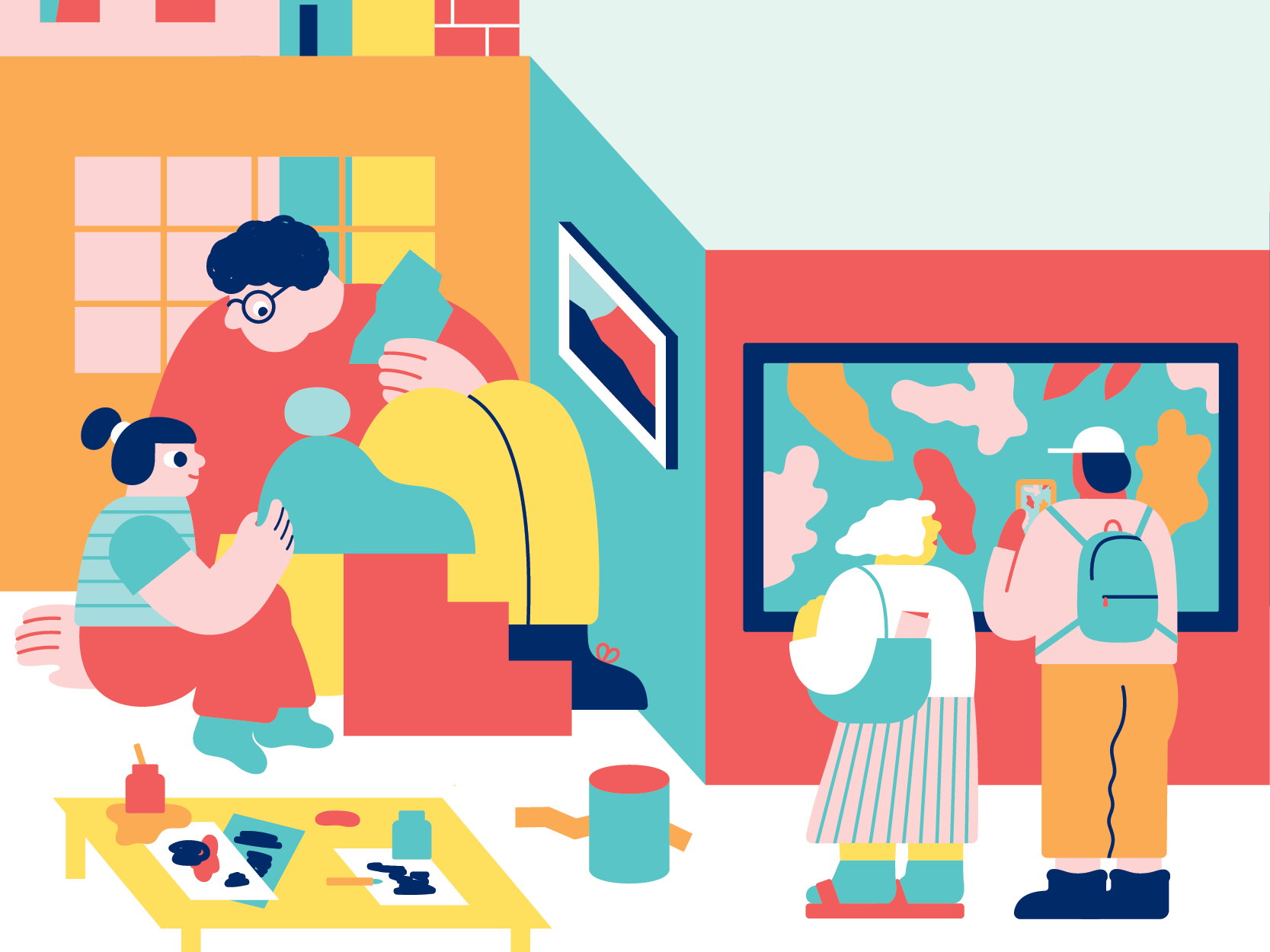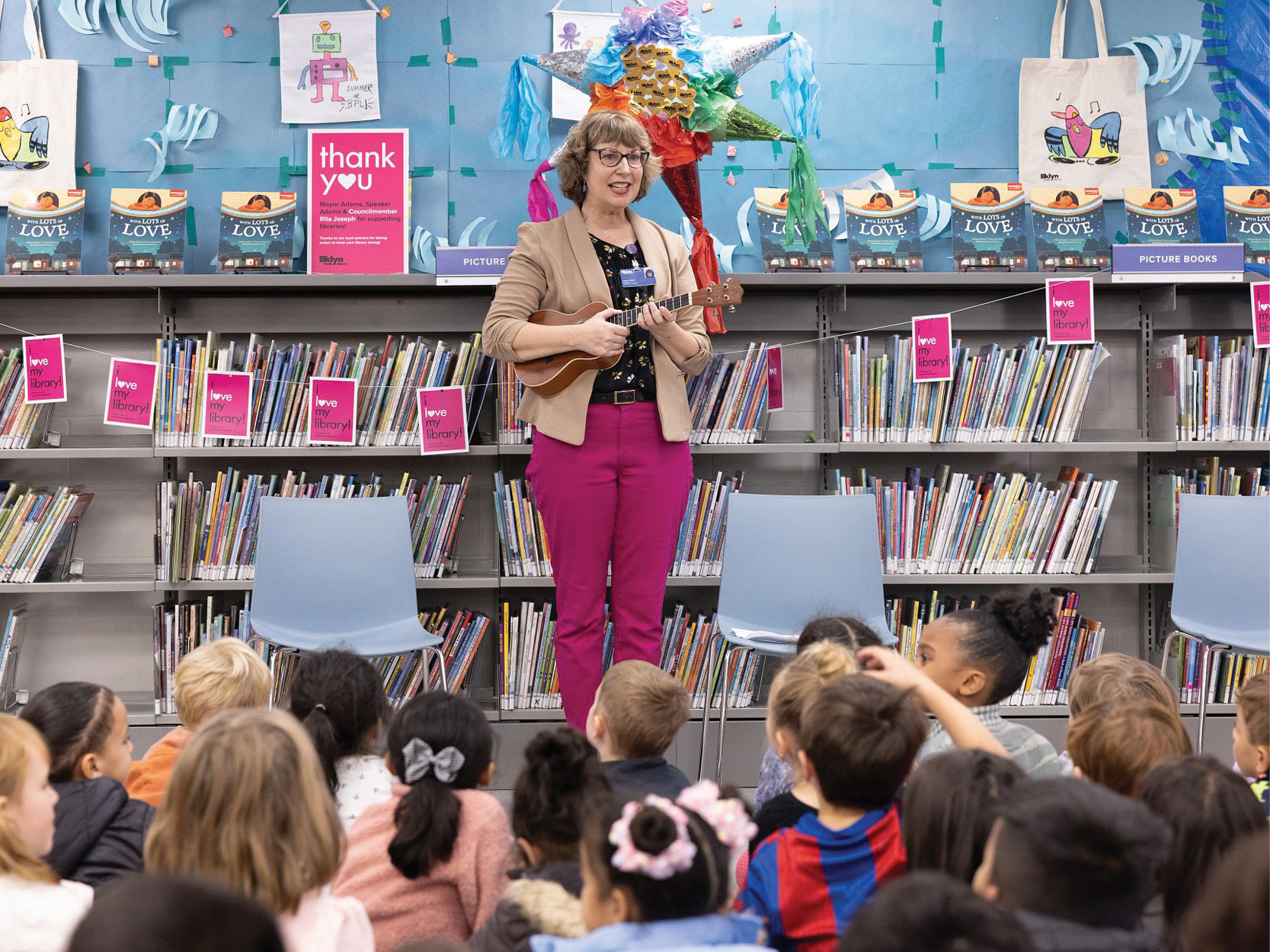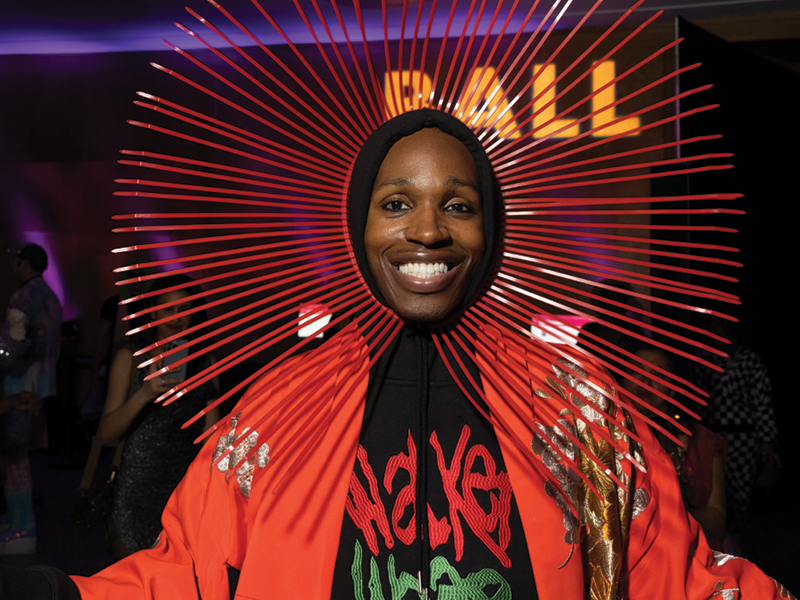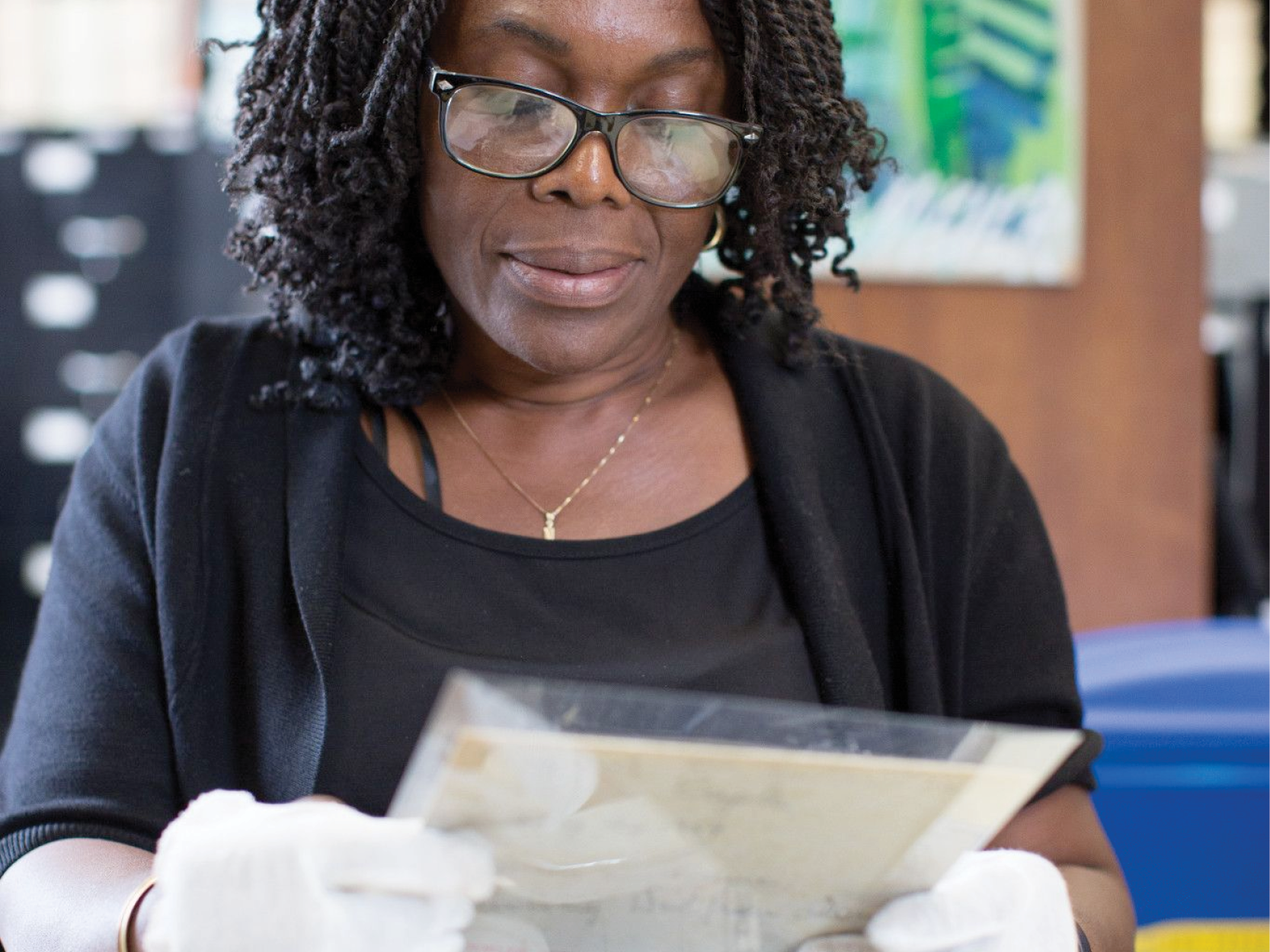Dig deep into the history of Brooklyn with our free digital curricula and lesson plans. Here you will find classroom ready resources on a wide variety of local history topics. Explore curriculum kits designed to give educators everything they need to plan units on history topics, from innovative lesson plans that draw on primary sources to a comprehensive teacher’s guide and more.
Brooklyn Resists Curriculum
This curriculum is an adaptation of the Brooklyn Resists (2020) exhibition. The featured case studies, contextual videos are derived from the exhibition and the Brooklyn Public Library, ranging from the 1600s to the 2020s. It is divided into six separate sections corresponding to the exhibition. This curriculum is meant to expand the history of Black Brooklynites with the objective of tailoring the exhibition content to social studies Scope & Sequence framework. Please explore here.

(Re)connecting Brooklyn's History: Event Booklets & Recordings
(Re)connecting Brooklyn's History is CBH Education's history series where introduce middle and high school students and educators to historians and scholars whose work looking at Brooklyn’s past relates to issues taught in the classroom. After each historian talk, we make a recording of the event as well as companion booklets rich with resources and lesson plans available. All can be used in the classroom. Explore them here.

Bats, Balls, Nets & Hoops: Stories of Sports in Brooklyn
The history of sports in Brooklyn provides an intriguing window on enduring issues in American history, from civil rights to urbanization. Using case studies examining baseball legend Jackie Robinson, 1940s African-American track star Mary DeSaussure Sobers, Prospect Park as a locus of play and basketball’s roots in Brooklyn long before the Nets, these lessons will build upon children’s fascination with sports to explore the way athletics have always been more than simple games.
Find the curriculum here.
.png)
Books by the Young Scholars
From the amusements of Coney Island to the sewers beneath our feet, explore the wide range of books written by the students of the Young Scholars program. These books are the result of students in 4th-12th grade researching archival sources; learning from acclaimed scholars, authors, and public figures; and collaborating to compose original volumes. The books here represent six years of the program. Access the books here.
 The Brooklyn Bridge
The Brooklyn Bridge
Designed for grades 2-4. Explore the history, construction, and importance of one of New York's most prominent landmarks: the Brooklyn Bridge. We offer a Curriculum Kit, Demonstration Images, Image Cards, and worksheets.
Please use the following videos to learn more about the Brooklyn Bridge, how and we it was created, and its' impact on Brooklyn.
We suggest using the following book from the Young Scholars program for further information about the Brooklyn Bridge: Stories of the Brooklyn Bridge

Brooklynology
The archive will come alive for your students when they read our Brooklynology blog! Archivists tell incredible Brooklyn stories using material from our archive and model how historic newspapers, photographs, and ephemera can tell us so much about where we live. Brooklyn Connections educators are regularly featured on the blog with posts that demonstrate how they teach with archival material. Access the blog here.

The Civil War: Voices from Brooklyn
This curriculum was developed in commemoration of the 150th anniversary of the end of the Civil War and highlights collections from Brooklyn Historical Society and Green-Wood Cemetery. These letters, cartes de visite, wartime illustrations, and broadsides document visual and print communication made by and for Brooklynites during the American Civil War. They have been paired with adaptable handouts and strategies for critical thinking across the humanities and social sciences, designed for grades 4 – 12. Explore here.

Digitized Archival Resources
Looking for a historic primary source to compliment a lesson plan? Look no further! Access over 200,000 digitized photographs, maps, ephemera, oral history recordings, and more from our archive's Digital Collections. Search by keyword or navigate through the featured collections. You never know what you might find! Start your search here.

Dutch Breukelen: Where Brooklyn Began
This curriculum, designed for grades 2–8, transforms your classroom into a learning lab about seventeenth-century Brooklyn. With primary sources including maps, diaries, cookbooks, account ledgers, and drawings, Dutch Breukelen: Where Brooklyn Began contains resources and prompts that will spark and engage the curiosity of students about the origins of New York’s most populous borough. Explore here.

Exploring Pre-Revolutionary New York: the Ratzer Map
Explore CBH’s rare 1770 map of colonial New York with this content-rich curriculum. This map, The Plan of the City of New York in North America, was made by British military officer Bernard Ratzer in 1766–1767 and printed in 1770. One of only four still in existence, it is one of the finest and most detailed depictions of a commercial New York City in the years before the American Revolution. here.

In Pursuit of Freedom
A comprehensive website of educator resources centered on the development of the abolition movement in Brooklyn from the end of the American Revolution to the early days of Reconstruction. The site features lesson plans, games, walking tours, and more.
Access the website here.

Lesson Plans for Teaching with Primary Sources
Our team supports K-12 educators to deliver skill-based instruction through a local history lens. Download free, curriculum and standards-aligned lesson plans written by educators that can be differentiated for elementary, middle or high school students. Find them here.

Mapping Freedom and Enslavement
Using primary sources, Mapping Freedom and Slavery helps students study the history of slavery and abolition in Brooklyn and to learn about Black-led institutions and organizations of the late-18th and early-19th century. Find it here.

Muslims in Brooklyn
All grades/ages. Explore the long history of Muslim communities in Brooklyn and use oral histories to hear how the experiences of individuals within these communities illustrate historical and cultural themes over time. Our Teacher Toolbox features lesson plans and classroom materials. Access the Toolbox here.

Primary Source Packets
Access approximately 100 archives educator-curated primary source packets on an array of local history topics from the Civil Rights Movement to Neighborhood History and Gentrification in Brooklyn. Each packet includes thoughtful document-based questions to help students analyze and synthesis primary sources about Brooklyn's people, places and events. View and download here.

Voices of Mixed Heritage: Crossing Borders, Bridging Generations
Voices of Mixed Heritage: Crossing Borders, Bridging Generations invites students and educators to engage with the topic of mixed heritage and identity in the United States from the mid-19th century to the present. Students will investigate the voices and representation of those who identify as mixed-heritage individuals through oral histories, archival primary sources, popular culture references, and contextualizing secondary sources. These resources will allow students to unpack complex political concepts such as race, racism, identity, equity, and self-determination.
Access the website here.
Access the curriculum here.
CBH Education Videos
The following videos were created to provide information for students about a particular topic in Brooklyn's history.
 Public Health and Sanitation: In the early decades of the 19th century, it was not understood that exposure to germs in sewage caused disease. However, it was clear that a shortage of clean water was contributing to unsanitary conditions. After the cholera outbreak of 1832, Brooklyn’s neighbor, New York City, moved to secure its first public water system and create a safe way to dispose of human waste. The following sources can be used to provide information and teach this story.
Public Health and Sanitation: In the early decades of the 19th century, it was not understood that exposure to germs in sewage caused disease. However, it was clear that a shortage of clean water was contributing to unsanitary conditions. After the cholera outbreak of 1832, Brooklyn’s neighbor, New York City, moved to secure its first public water system and create a safe way to dispose of human waste. The following sources can be used to provide information and teach this story.
Videos
Background Information
- Barren Island: New York's Smelliest Island
- Keeping Brooklyn Healthy: The Evolution of Our Sewers, Waterways, and Sanitation
- Newtown Creek Is Alive: A Story of Sewage and OIl
- Sewers: The Things You Wish You Knew...and the Things You Wish You Didn't
- Sewers, Water and Germs: New York's Battle Against Pandemics
 World War II and the Brooklyn Navy Yard: The following videos, primary source packets, and other information discuss stories from the Brooklyn Navy Yard during World War II.
World War II and the Brooklyn Navy Yard: The following videos, primary source packets, and other information discuss stories from the Brooklyn Navy Yard during World War II.
In 1930’s, the world experienced the Great Depression, with 25% unemployment in the US. World War II revived economy and provided many jobs for hurting populations. A number of prominent African-American labor activists (A. Philip Randolph, Bayard Rustin) decided to organize a “March on Washington” in 1941 for equal access to jobs.
President Franklin D. Roosevelt, seeking to avoid a disruptive demonstration during the war, signed Executive Order 8802, desegregating the defense industry. It required the federal government to ensure training and vocational programs were open to all, regardless of “race, creed, color, or national origin.” Defense contracts also include clauses that barred private companies from discriminating. The march was called off after this victory (not without controversy). The march eventually did take place – in 1963. It was the march where Martin Luther King, Jr. gave his famous “I Have a Dream” speech. (And was organized again by the same people.) The US Armed Forces were segregated throughout WWII. African-Americans served in separate units until 1948, when the military was desegregated by Executive Order 9981 by President Truman.
Before presidential order EEOC 8802 which desegregated the defense industry, women worked as secretaries and seamstresses, and most minorities were janitors or lower level position. Now, The Brooklyn Navy Yard's civilian workforce was able to hire civillian women and minorities workers in industrial jobs such as welders, ship fitters, and other factory work. Because of this, Rosie the Riviter was born. The following sources can be used to provide information and teach about World War II at the Brooklyn Navy Yard.
Videos:
Background Information:
Oral Histories:
Mimi Leipzig was a young woman who worked as a welder at the Brooklyn Navy Yard during World War II. Here are clips of her story.
Ida Pollack and Sylvia Everitt, friends who worked at the Brooklyn Navy Yard as welders during the war. Together, they tell their stories about working and discriminiation at the Brooklyn Navy Yard.
An Arc welder, Carmela Zuza talks about working on the Missouri and other ships. The Missouri was the site where the United States, England and Japan ended World War II.
Lucille Ford, a black woman, worked at the yard among women she may not have interacted with before the war. She discusses how cultural differences, such as food, began to blur as they learned about each other.
Clarence Irving, a black man, discusses his experience at the Navy Yard. In the clip, he discusses his view of the working conditions were at the yard. (Suggestion: Compare Clarence's clip with Howard's.)
Howard Zinn, author of "A People's History of the United States," worked at the Brooklyn Navy Yard as an industrial worker during World War II. In the clip, he discusses his view of the working conditions were at the yard. (Suggestion: Compare Clarence's clip with Howard's.)
CBH Education is generously supported by The Morris and Alma Schapiro Fund, Epstein Teicher Philanthropies, Nissan Foundation, The Pine Tree Foundation, and National Grid.








